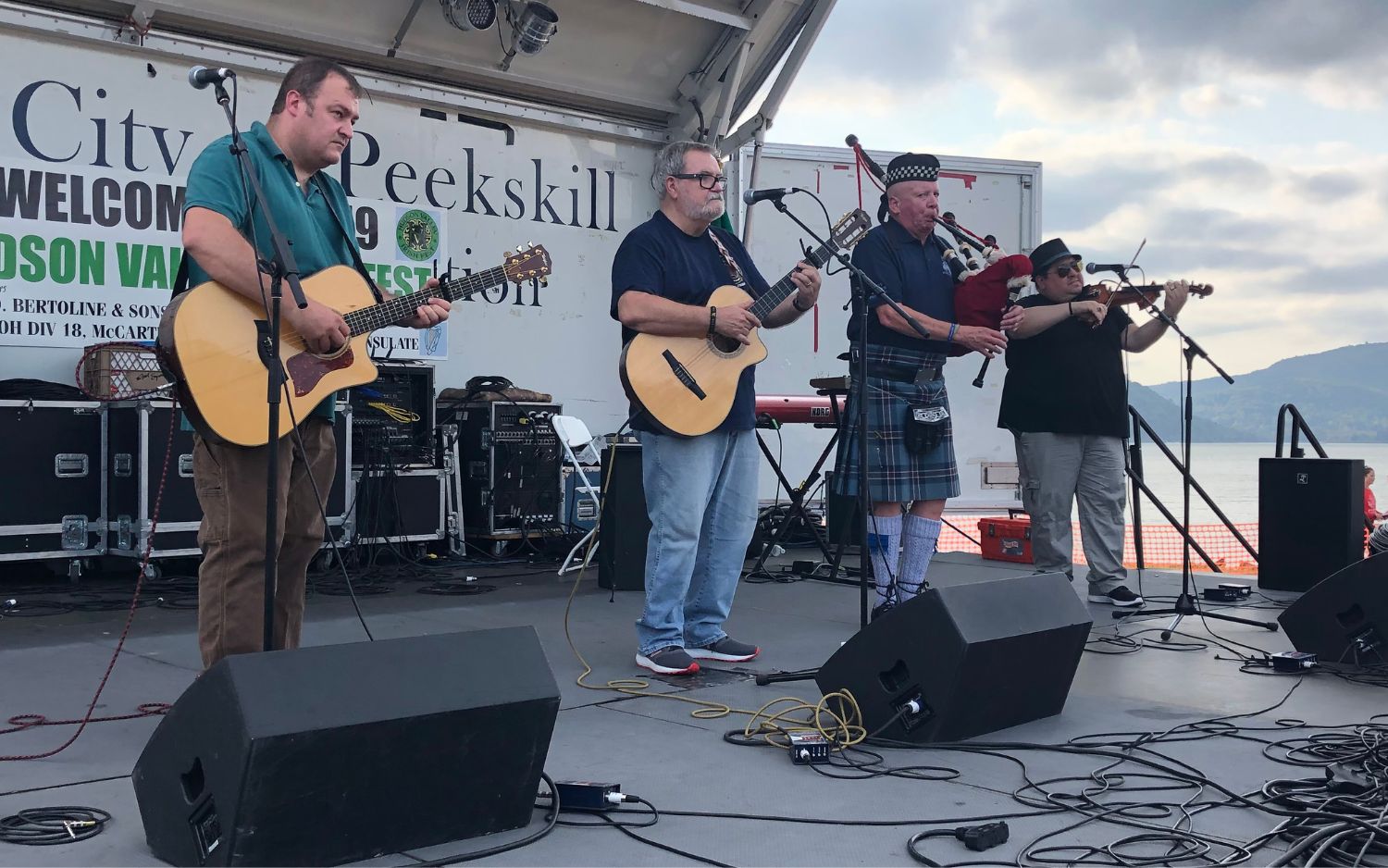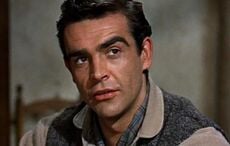As president of Quinnipiac University for the past 23 years, John Lahey has played a vital role in educating the public about the story of the Great Hunger. Through his appearances as Grand Marshal of New York’s St. Patrick’s Day Parade in 1997 and the Great Hunger Lender Family Special Collection at Quinnipiac that came into existence soon afterward, Lahey has championed the need for the history of An Gorta Mór to be accurately and completely told. Quinnipiac’s trove is one of the most extensive collections of art and literature in America devoted to Ireland’s Great Famine.
Lahey recently wrote a letter to The Wall Street Journal in response to a column by William McGurn, “My Wild Irish Woes,” which asserted that Great Hunger memorials emphasize defeat rather than pride, and explained his need to clarify his disagreement with McGurn’s stance. “I’m an educator, so I think accurate historical facts and explanations of events and history are important,” said Lahey. “It’s a fact of the Famine that the story wasn’t told accurately, it wasn’t told in a balanced way. The Irish were citizens of the UK, and clearly the [English government] showed a callous disregard for human life and basically used a tragedy that wasn’t of their making, in the sense that it was the potato failure itself, and allowed it to be used for land reform and other economic and political desires on their part. They allowed a million and a half people to die of starvation and another two million plus to leave, and basically decimated the country. None of that was really told; as you can imagine, no art was produced, reporting that or commemorating that at all. . . . So it’s really just beginning something that really should’ve been done 150 years ago, that under more normal circumstances would’ve taken place and so that’s why it’s important to do it now.”
Lahey’s roots are in Knockglossmore, a town outside of Tralee in Kerry. His paternal grandfather, Daniel Lahey, was born there and emigrated to Canada and then to New York City. His grandfather was a stonemason and brought the trade to America, where Lahey’s father worked as a bricklayer in New York. Daniel Lahey married Agnes Roche from Cork. Lahey’s mother’s family were Griffins, from County Clare, all areas that were affected deeply by the Great Hunger.
In 1997, when Lahey was asked to serve as Grand Marshal of the St. Patrick’s Day Parade in New York City, he decided to use the platform to speak about the Famine. “I read Christine Kinealy’s book, This Great Calamity, in 1995. When you see the painstaking detail that she went to in terms of the research and talking about the food and the shipments on the boats and the records, you see that for a five year period of time, in fact, very little was done to ease the suffering, the ports were not closed. . . . Food was shipped out of Ireland in increasing amounts in the years of the Famine. … [When] I was approached to be Grand Marshal of the St. Patrick’s Day Parade in 1997, I wanted to make the Great Hunger the theme of the parade that year. I didn’t think my own Irish life was all that interesting; a lot of the Grand Marshals talk about themselves, but being the educator I am, I wanted to use that opportunity and that platform to talk about the Great Hunger, so I did. … From January 1 to March 17, all the Irish organizations, the county organizations, the AOHs, they all have their annual events and they invite the Grand Marshal. Literally, I think there were almost 200 invitations. So, I went and I talked.”
Lahey’s speeches brought the issue of the Great Hunger to the attention of Murray Lender, a Jewish immigrant whose father fled persecution in Poland, came to New Haven, and started a bagel business that became Lender’s Bagels, a multi-hundreds-of-millions-of-dollars company that was ultimately sold to Kraft approximately 15 years ago. “While I was giving all these speeches [as Grand Marshal], he came to me and said, ‘John, it’s just amazing to me, this story of the Great Hunger.’ You could tell that he associated it with persecution of the Jews and other ethnic groups, African Americans, Native Americans, in this country, and he said, ‘I’ll give you a gift for the library but it’s got to be for the Irish Great Hunger special collection. You go out and tell me what you need to do and collect the art and get the research materials and the books and periodicals, and I and my brother, Marvin Lender, we’ll take care of it.’”
With this outside help, Lahey began collecting materials for the Quinnipiac collection of Famine works. “[Rowan Gillespie’s] The Victim was my first piece. I literally carried it back on the plane [from Ireland] with me, I wouldn’t let it go. It is such a powerful piece; the facial expression captures everything about the suffering and pain. Later in that same summer, we went back to Ireland, to a Westport art show and I saw Margaret Chamberlain’s sculpture of people with psychological problems and I could just tell that she was an artist who was able to capture the torment, and I commissioned her to do the original piece The Leave-taking.
“Another powerful piece we have is a miniature version of John Behan’s The Famine Ship, the original of which sits at the foot of Croagh Patrick. I can remember when I first saw it. I was with my son and we parked the car in the parking lot. It’s a bit of a walk to get to it. It’s very big, and it looks from a distance like a sailing ship, but it wasn’t until I got pretty close to it that I could see the skeletons stretched across it.”
The collection has since outgrown the space that was originally set aside for it, and Lahey plans an expansion for the near future that will bring it to the attention of a larger public. “We own a good sized building on Whitney Avenue and we have some people in there right now, some different offices, but our plan is to move them out over the next few years and to turn that into a Great Hunger Art Museum. It’s not going to be the size of Yale’s British Museum but it will allow us to display much more of the collection than we’re currently able to display . The other thing is that it will be more accessible to the public. Now they have to literally come on the center of campus so we don’t get quite the visitation we’d really like to get. Whitney Avenue is a very public place, the main street which runs all the way from Hartford to New Haven. We can get very public signage and there’s plenty of parking there and that will allow the collection to be much more accessible and we can have public events there and so on.”
Lahey sees the Great Hunger collection as a way to depict the importance of human intervention in crises that stem from natural causes. “We need to educate people that many of these things were just, unfortunately, human beings not reacting in ways that they could have, not having the right amount of compassion or political will. If you think of the recent experience in this country with Hurricane Katrina, you can’t blame anyone for the hurricane itself, that’s the natural cause of it, but the ineptitude and callousness of the response of the federal government and local authorities and others just turned a crisis into a true disaster. …When you’re dealing with life and death and people displaced and homeless and starving and health issues, you need to throw the rules out the window and as a society come together – that’s why even during the Great Hunger, the English argue, ‘well, that was the approach back in those days, laissez faire policy, and sure they could’ve closed the ports but that was private food’ – well, no, that’s what we should’ve done. And there were actually incidents prior to that in Ireland where it was handled much better. The subsistence crisis back in the 18th century is not remembered at all because of that, as opposed to how the Great Hunger almost fifty years later was mishandled.”
In his years overseeing the Great Hunger collection and giving tours of its contents, Lahey recalls one visitor’s reaction that stands out for him. “We had Gerry Adams speak at Quinnipiac. I brought him down to the library and I started to do my normal presentation, you know, this is John Behan’s piece of art, this is one that we commissioned from Margaret Chamberlain and so on, and then I walked him over and said this is Rowan Gillespie’s piece, The Victim. Then I went on and I was on to the next one before I looked back and Gerry Adams was standing there, he couldn’t move. He was just overwhelmed by, I think, the fact that a university that he didn’t know particularly anything about in Connecticut would have a collection dedicated to the Great Hunger. And the power of that piece. I think people seeing the collection for the first time, they’re very clearly moved by it.”




Comments